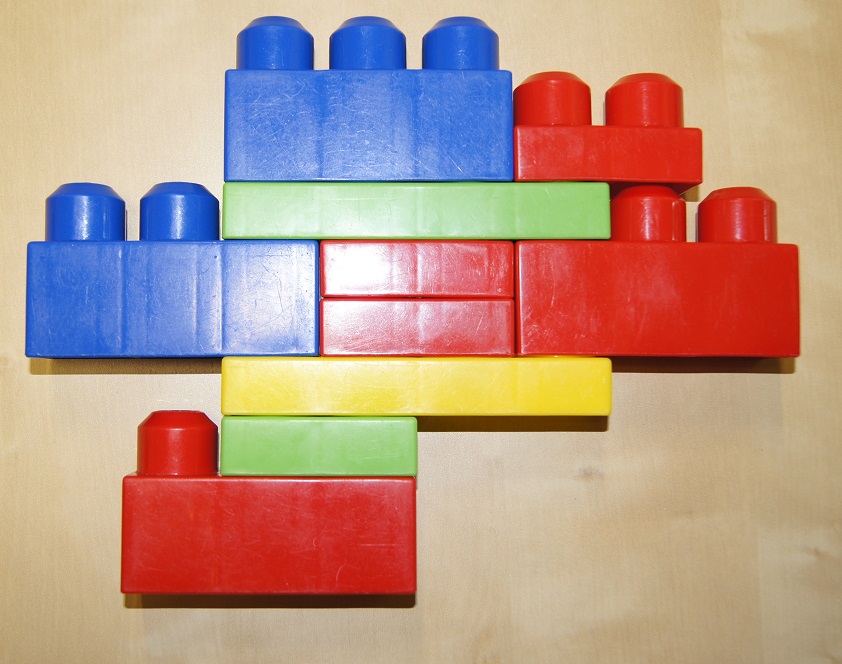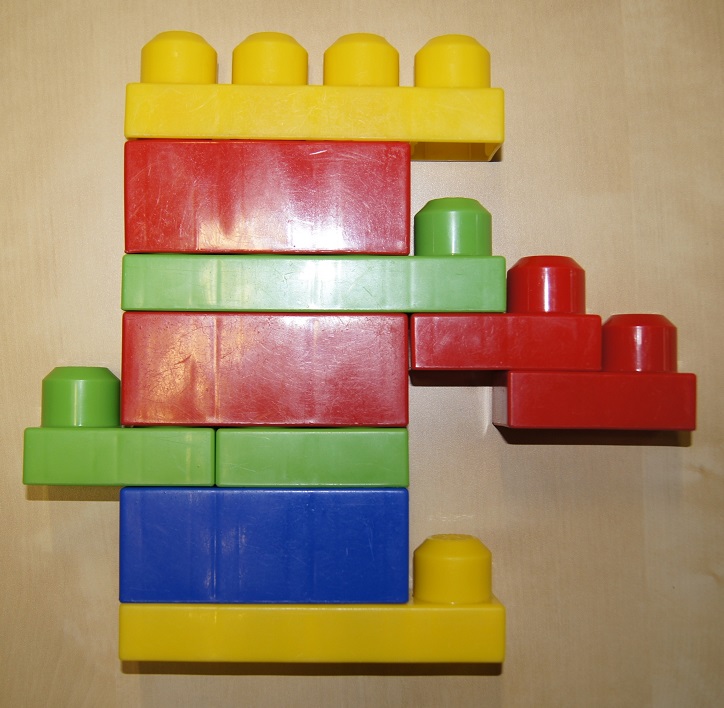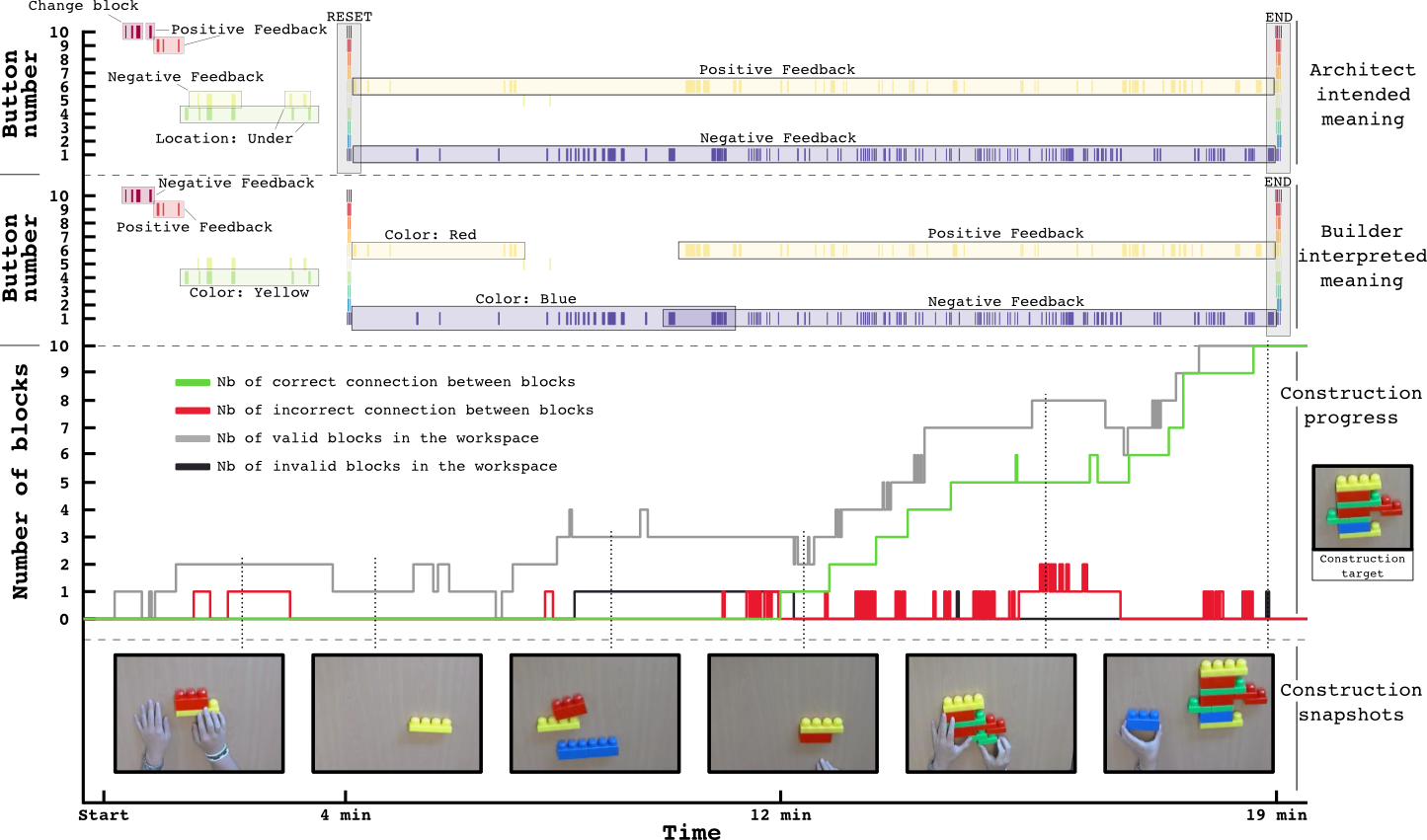Section: New Results
Studying the Co-Construction of Interaction Protocols in Collaborative Tasks with Humans
Experimental Setups for User Study of Alignment in Asymmetric Interactions
Participants : Anna-Lisa Vollmer [correspondant] , Jonathan Grizou, Manuel Lopes, Katharina Rohlfing, Pierre-Yves Oudeyer.
In interaction, humans align and effortlessly create common ground in communication, allowing efficient collaboration in widely diverse contexts. Robots are still far away from being able to adapt in such a flexible manner with non-expert humans to complete collaborative tasks. Challenges include the capability to understand unknown feedback or guidance signals, to make sense of what they refer to depending on their timing and context, and to agree on how to organize the interaction into roles and turns.
As a first step in approaching this issue, we investigated the processes used by humans to negotiate a protocol of interaction when they do not already share one. We developed a new experimental setup, where two humans have to collaborate to solve a task. The channels of communication they can use are constrained and force them to invent and agree on a shared interaction protocol in order to solve the task. These constraints allow us to analyze how a communication protocol is progressively established through the interplay and history of individual actions.
We consider a remote construction task, where one user (user A) knows what to build but do not have access to the construction site while its partner (user B) is at the site but do not know what to do. By constraining the communicative channel between the two partners, we study how, and if, they will agree on a similar set of signals to convey information and what type of information they tend to produce. The experimental setup consist of box with button, a video recording system and two screens. User A can send signals to user B by pressing buttons (fig. 14 ). Signals are displayed on a screen (fig. 14 ) at user B side. User A is not aware of what is displayed on user B screen, neither user B is aware of the relation between button presses and screen events. The video of user B construction scene is streamed to a screen at user B side. The task consist of bulding arbitrary construction (fig. 14 ) using colored toy bricks (fig. 14 ).
The various data recolted during these interaction sequences (fig. 15 ) allow us to study the Co-Construction of Interaction Protocols. This work was published in a conference paper [66] .
|
|







